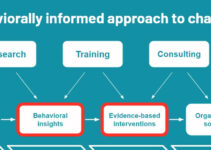A change management strategy is a systematic approach to helping businesses and companies deal with organizational transformation effectively. The focus of the change strategic approach is to decrease the employees’ resistance and improve their productivity during the specific change phase. Today, we’ll discuss the types of change management strategies; pros and cons; elements and steps involved in building organizational change strategies.
The change management strategic approach offers a roadmap comprised of the following;
- Outlining the goals, objectives, and purpose of the change project
- Recognizing the main stakeholders
- Setting the timeline and deadline to reach the milestones and objectives
- Allocating the budget and resources
- Workflow of activities
Steps involved in building the Organizational Change Strategy
- Defining goals, objectives, and vision of the change program
- Connecting and engaging with the top management
- Requesting the feedback of employees and team members
- Analyzing their feedback and key insight
- Crafting a comprehensive roadmap for the change project
- Preparing for the potential risk factors
- Communicating effectively throughout the change process
- Conducting the training programs to bridge the skill and expertise of employees
Types of Change Management Strategies
Some of the main types of change management strategies are as follows;
Planned Strategic Approach
The planned strategic approach is a very common type of strategy and companies use it for small, well-defined, and comprehensive changes. It is a top-to-bottom strategic approach that companies use to communicate with employees and make effective decisions. However, it is highly effective if the changes are small and highly effective.
Pros:
- It is easy to execute
- And it yields in the form of small and limited disruptions
Cons:
- it is highly inflexible and it won’t work in companies when the changes are large and complicated
Laissez-Fair Strategic Approach
Laissez-Fair Strategic Approach is contrary to the planned strategy and it follows the hands-off management style. The laissez-fair is not a very common type and it is highly useful in the situation when the company requires an innovative and creative strategy. Employees and team members have the freedom and luxury to execute the changes in whatever they see fit in the laissez-faire type.
Pros:
- It compels employees and team members to become highly creative And innovative by brainstorming various ideas
Cons:
- it could be highly chaotic and won’t yield the desired changes
Incremental Strategic Approach
The incremental strategic approach is the method of gradual change strategy and it is comprised of implementing and making small changes over time. This strategic approach is highly useful when the change initiative is large and complex; the employees and team members require a lot of time to adapt to the changes.
Pros:
- It is a highly useful and effective strategy for introducing the new change initiative to the employees slowly;
- They would adopt the changes gradually
Cons:
- Difficult to execute the changes on a large scale by implementing the changes incrementally and gradually
- Employees take a lot of time to adjust to the changes and the new ways of doing things.
- However, it is significant to keep in mind all the options before selecting this incremental change strategy
Radical Strategic Approach
The radical strategic approach is a type of change strategy that focuses on implementing quick and sweeping changes all at once. A radical strategy is a great option when the changes are small and well-defined and you want quick and immediate results.
Pros:
- Effectively and efficiently implementing large-scale changes;
- Develops a sense of urgency and excitement relevant to the change project;
- It allows you to decrease the resistance to the change project
Cons:
- Disrupts the functions and options of the company
- A highly and time-consuming strategic approach
- Not an efficient and effective strategy in the long term
Transformational Strategic Approach
The transformational strategic approach is a type of change strategy that focuses on envisioning the future and motivating employees to achieve their goals and objectives. It is a useful and effective strategy when the changes are large and complex and the company requires long-term sustainability.
Pros:
- Doesn’t cause resistance among employees and team members, because it implements the changes gradually when they’re simpler and easier to accept
- Flexible and adapt to the specific needs of the organization
- Doesn’t disrupt the company’s operations suddenly; doesn’t compel employees and team members to make sudden changes
Cons:
- Time-consuming
- Requires a significant amount of resources
- Doesn’t give immediate results
Developmental Strategic Approach
The developmental strategic approach is a type of change strategy that conducts training programs for employees’ development. This strategic approach is highly beneficial when the changes are large and complex and the company requires long-term sustainability. However, it focuses on improving the current business processes, skills, knowledge, and expertise.
Pros:
- You could foretell the outcome and result
- Heavily relying and depending on the existing business processes and systems
- Not taking big risks and you don’t suggest anything new
- Easily manageable if the change of scope is small
- Limited resistance from the employees and team members
Cons:
- Time-consuming
- Requires a lot of capital resources for conducting training programs
Conclusion: Types of Change Management Strategies | Types of Organizational Change Strategies
After an in-depth study of the types of change management strategies; we have realized that change strategies are highly significant for the organizational change project. If you are learning about types of organizational change strategies; then you should keep in mind the abovementioned types, pros and cons, and elements.
Ahsan is an accomplished researcher and has a deep insight in worldly life affairs. He goes Live 3 days a week on various social media platforms. Other than research writing, he’s a very interesting person.


